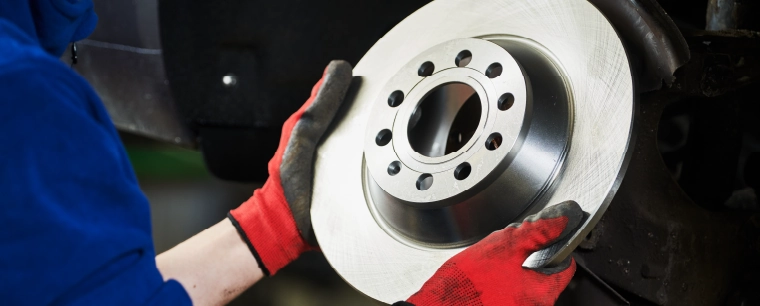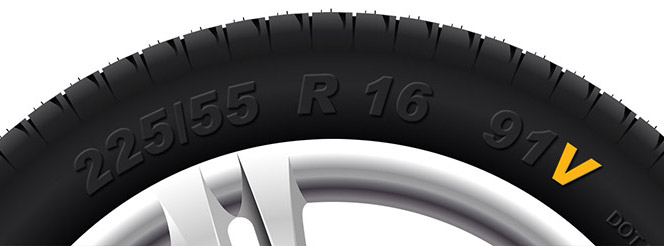What are the Differences Between a Disc Brake and Drum Brake?
Published on: Monday, 26 August 2024 | Author: Jack Dreyer
Brakes are a crucial component in any car. They ensure your safety on the road and, ultimately, save lives. While most people can remember the first (and hopefully the last) time they were asked to carry out an emergency stop, we rarely consider the inner workings of the brake system, where it began, and how it has developed into the modern component we use today.
In essence, brakes work by engaging friction surfaces with rotating wheels (usually called brake discs or rotors) to dissipate kinetic energy.
The history of the brake system dates back hundreds of years, where carriages were stopped by pressing wooden pads onto the wheels with levers. It wasn’t long, though, before these would wear down and become largely useless – needing to be replaced.
In line with the development of the first modern car, evolved two kinds of brakes devised for modern pneumatic (rubber) tyres: disc brakes and drum brakes. The first drum brake was invented by Frederic Wilhelm Lanchester in 1902, while the disc brake was patented by Louis Renault in the same year.
While being quite different in design, both serve the same purpose – albeit with unique applications.
What are drum brakes?
Drum brakes in general are made up of a core “drum”, which is a cylindrical casing (quite like a large bowl) connected to the wheel. To this are attached brake shoes, which are situated inside the drum, and a master cylinder (piston) connected to the brake pedal. When a brake pedal is pressed, the master cylinder pushes the brake shoes radially (in an outward circular motion) against the inner surface of the drum, causing friction with the lining.
This friction converts kinetic energy into thermal energy, eventually slowing down the car. In other words, it converts the forward momentum of the car (that kinetic energy) into heat; it’s this that slows it down.
While they were phased out of car manufacturing in the early 90s, drum brakes are still used in some vehicles, most commonly in lorries, trucks, and other heavy goods vehicles. They are favoured in commercial vehicles because of their low cost and long service life. Because drum brakes are situated inside a heat-conductive cast-iron casing, they are more durable and relatively easier to maintain.
However, their drum casing may be their downfall. Drum brakes do not have a heat outlet so tend to overheat in high-braking situations, rendering them useless at worst and inefficient at best. A fault called “grabbing” can also occur when the brake shoe becomes wet or rusty which causes the system to brake with more force than intended. In such cases the tyres can skid, causing the driver to lose control. It’s because of this that drum brakes tend to be reserved for emergency braking purposes.

What are disc brakes?
While disc brakes were introduced at a similar time as drum brakes, their popularity has prevailed. Disc brakes consist mostly of a central brake rotor (which is a metal disc) that rotates with the wheel.
When a driver exerts pressure on the brake, that power is amplified by the brake booster and converted to hydraulic pressure by the master cylinder – this pressure reaches the brakes on the wheel via the ‘brake lines’ – tubing filled with brake fluid. This then triggers the pistons to press the brake pads onto the brake rotor, causing friction and slowing down the car in much the same scientific way as drum brakes do.
Disc brakes have become a standard in modern cars because of their stable performance at higher speeds. Unlike drum brakes, they are better at dissipating heat and therefore, less prone to brake fade. While being more expensive, disc brakes are reliant in any weather and require less effort to be engaged.
However, a fault can occur after much wear and tear, known as “disc warping”, which is caused by excessive heat from braking – such as going downhill frequently and over-relying on your brakes rather than combining them with engine braking. Luckily, due to their simpler engineering, disc brakes are much easier to replace.
Which brakes are better for your needs?
While they differ, drum and disc brakes have now evolved to satisfy two separate purposes. Disc brakes perform better at higher speeds but are expensive to produce, while drum brakes are cheaper and more robust at the cost of ease of replacement.
Overall, disc brakes are better suited to performance-oriented vehicles in demanding driving conditions while drum brakes are suited to everyday uses on heavier vehicles.
Need help with your brakes?
If you’re having trouble with your brakes, the experts at your local Tyre Pros centre are always on hand to help. Get in touch for a free brake inspection.




